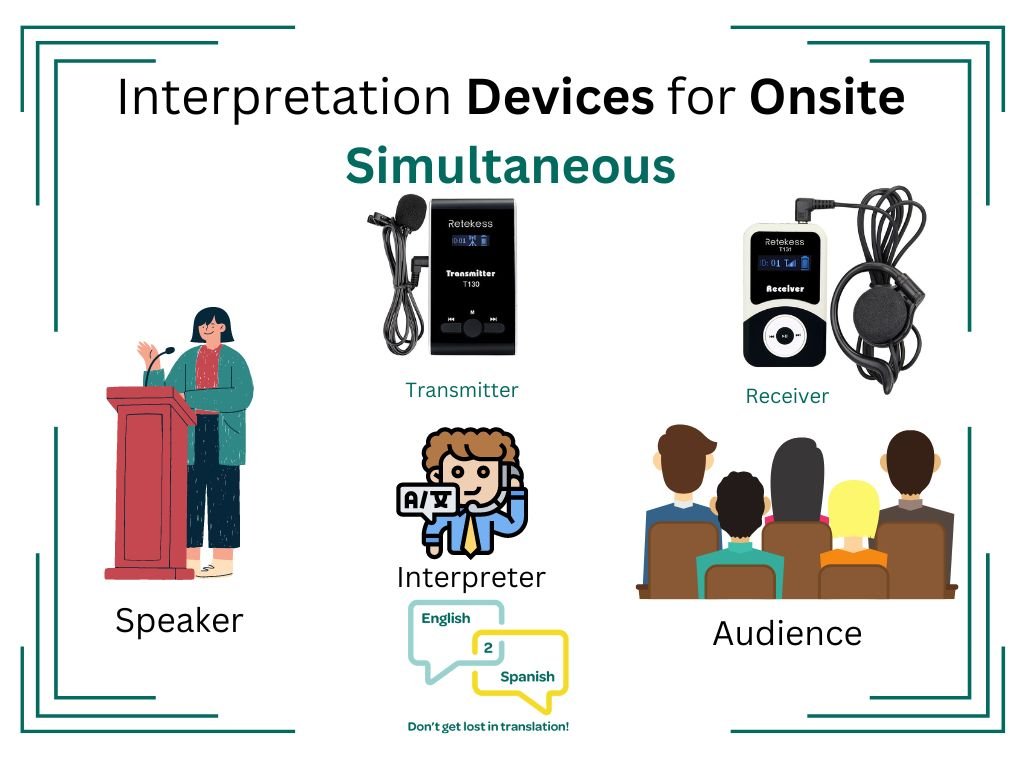Difference between Consecutive and Simultaneous Interpretation
Simultaneous Interpretation
● Simultaneous interpretation as its name externalizes it, is the translation that happens simultaneously to the discourse that is being transmitted. That is, the simultaneous interpreters perform the translation as they listen to the message.
● Simultaneous interpretation is a modality that wears out interpreters a lot, since you must think in two languages at the same time.
● This mode of interpretation is best suited for community meetings, board meetings, town hall, trainings, public events, court, IEP’s, conferences, symposia, conventions, or seminars.
● This type of interpretation requires a technical equipment composed of wireless transmitters, receivers, headphones, microphones (E2S offers rental of this equipment), or Zoom Business account among other elements that ensure that only those who need it listen to the interpreter have access.
● This type of interpretation requires less precision and linguistic correction than consecutive interpretation, due to the speed with which it must occur.
In addition, for a large audience, the system or technology of booths is used, with at least two interpreters per booth and language, who take turns every 15 minutes approximately.
Beside the standard onsite, we offer other modalities and equipment for simultaneous interpretation
Consecutive Interpretation
● It is a modality that is performed with intermediate pauses. In this process, the interpreter does not translate at the same time as the moderator speaks. That is, the interpreter must first listen to the message, then retain and analyze the information and finally interpret in English or in the language that the public handles as a native language.
● This formula is widely used in presentations of products and services, press conferences or formal speeches, when the recipients of the message understand either the language of the speaker or the language to which the interpreter translates.
● The interpreter should sit next to the speaker and take notes during their speech, while listening to the speech in the source language. The speaker must make frequent breaks, so that the interpreter can then reproduce the content of the message in the target language, as if it were enunciating the original speech.
● Because of this, the interpreters must make a great effort to remember, in addition to having a great capacity for concentration that allows him to capture the speech and its nuances correctly and, later, transfer it in the same way.
● In addition, they must have previously worked on a system that allows them to take notes quickly, having created a language of symbols and abbreviations that allows them to follow the rhythm of the speech.
● Consecutive interpretation is often used in medical interpretations, in communications between patients and doctors or in commercial negotiations.
● Consecutive interpreters have more control over the situation: they can clarify ambiguities, ask for the message to be repeated, or determine the meaning of the most problematic terms.
Beside the standard onsite, we offer other modalities for consecutive interpretation








